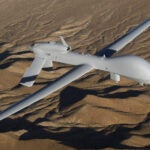
Four defense think tanks agreed on many areas where the defense budget should be cut and reprioritized to keep within budgetary limitations while still preserving its most important capabilities. Unfortunately for the Navy and Marine Corps, at-sea assets were not one of the areas of consensus. Some decisions were easy for the groups, who were tasked with creating two different spending plans for fiscal years 2015 to 2024: one adhering to full sequestration cuts as currently written in law, and…













